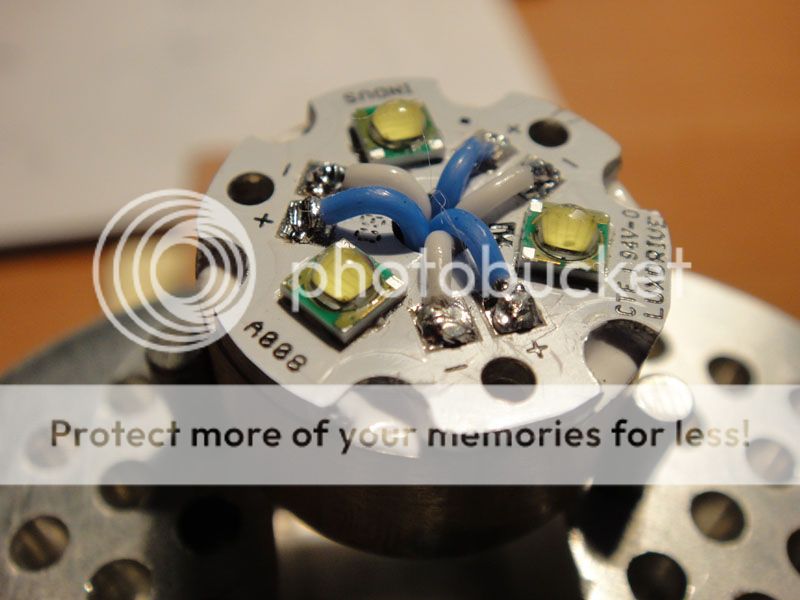You have parallel connection to the LED... which means (as Thr3Evo explained before) you are supplying the same voltage to the LEDs but supplied amperage is being divided to each LED "equally"... so if you're using a driver that outputs around 3.7V and 1.5A constant current, each of your LEDs sees 3.7V and 500mA...
Series would mean that each LED's positive is connected to next's negative and end pos/neg in that series to the driver's pos/neg outs... This means that current will be constant but voltage will be divided among three LEDs (so you need driver that outputs around 11V and any amperage it shows, each LED will see...
Series is preferred setup as it should be more reliable, at least in theory... However, when used with batteries, it involves batteries to be in setup as well, thus forcing whole build to be a bigger flashlight, unlike parallel that can be very small since they are pushed with single Li-Ion battery...
Parallel always have a possibility that connections to the LEDs are not 100% same which could lead to more resistance involved with one or two LEDs which then means more current will be supplied to the one LED with the least resistance... thus in setups with a big amp draw might lead to possible failure down the time as one LED might get overheated/overused than other two... In general, that's not very scary as any good soldering tech will make the same solder connections and it will work (and probably outlive the solderer)...
I believe you wired it like this one, my first attempt a year ago:


